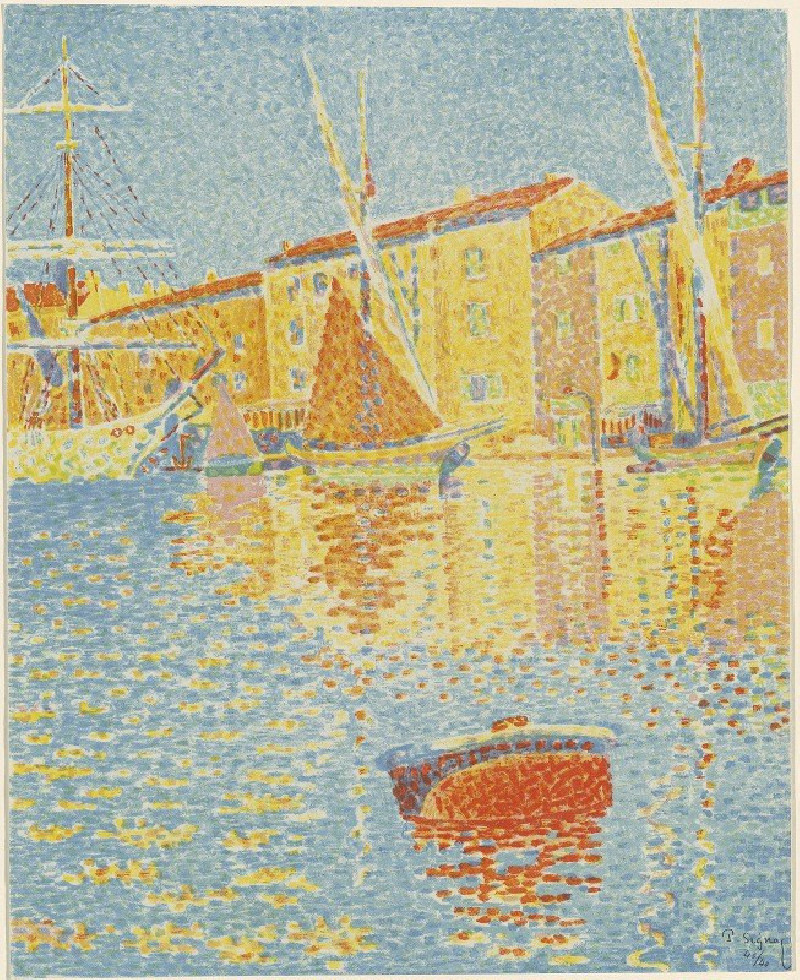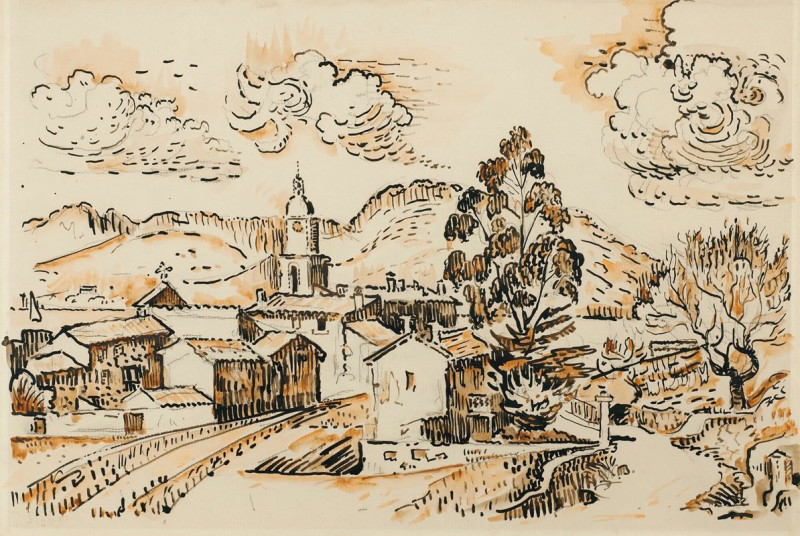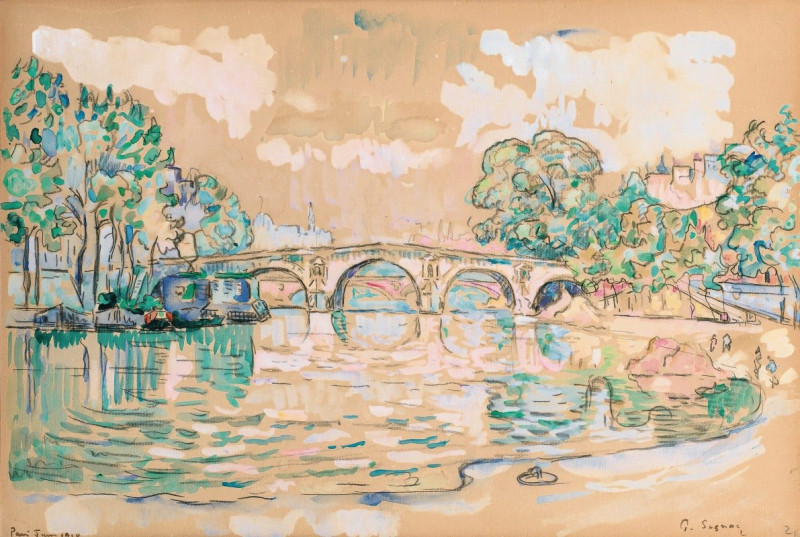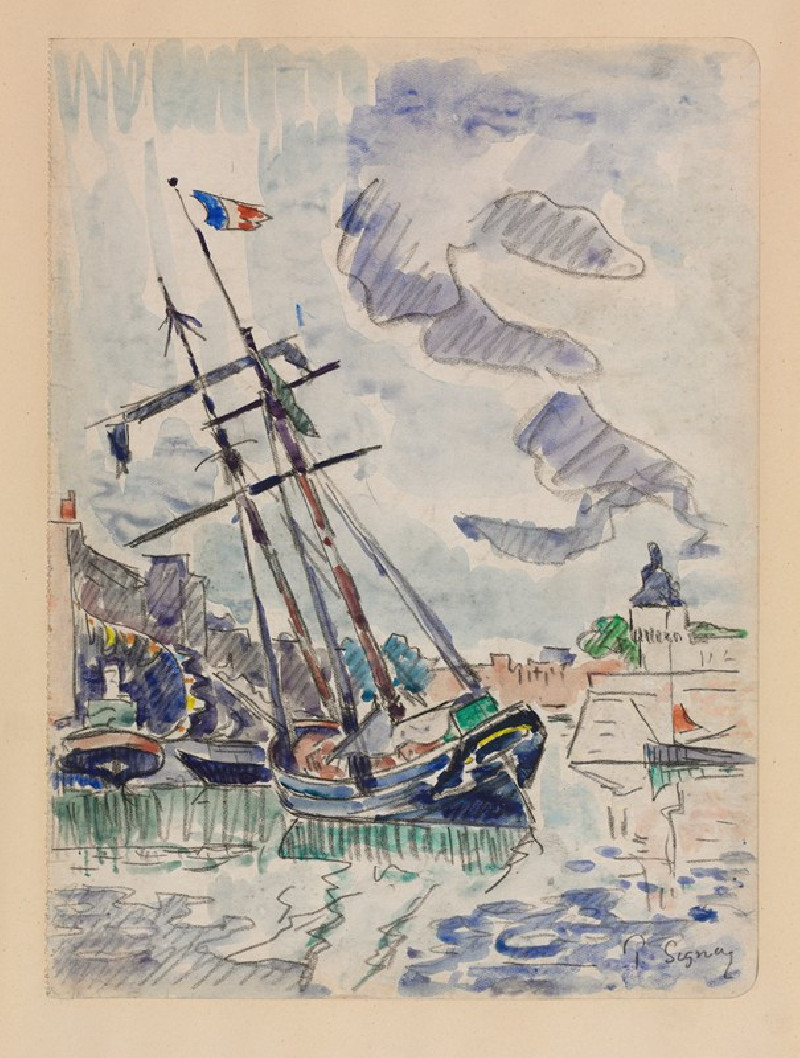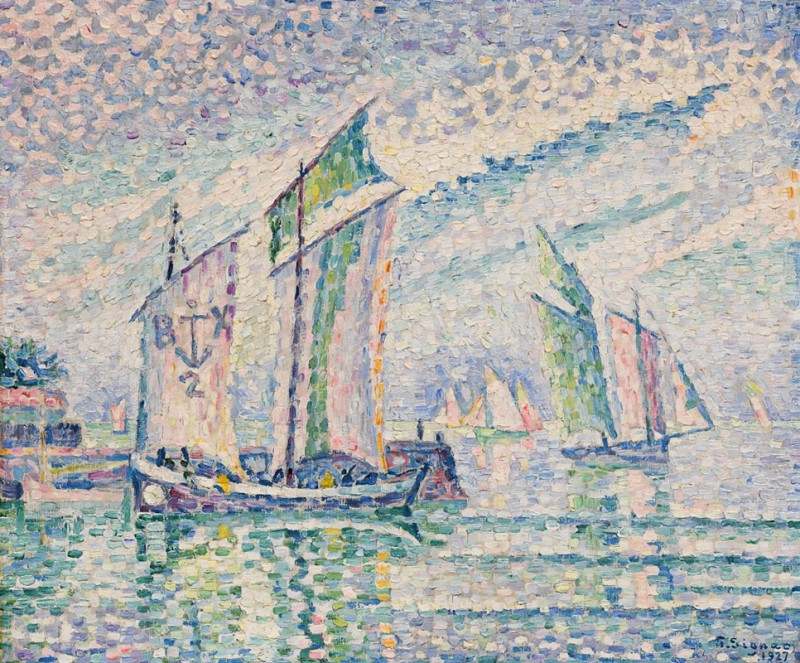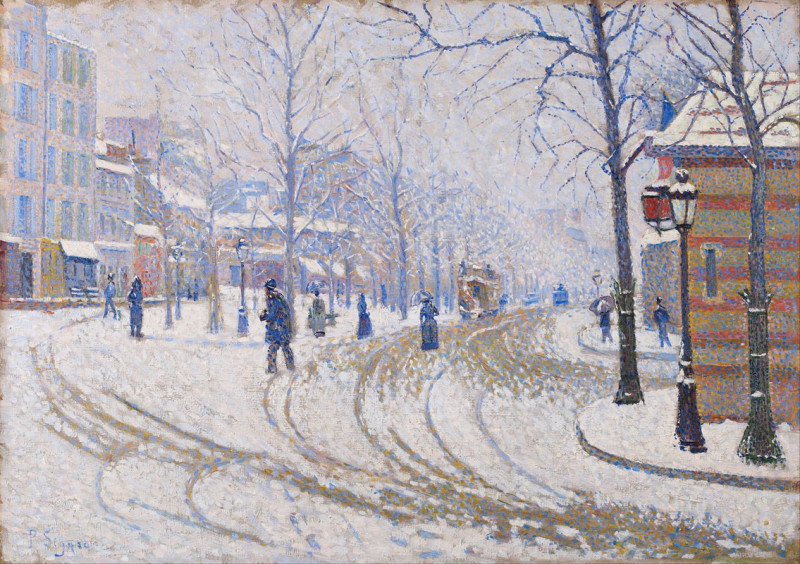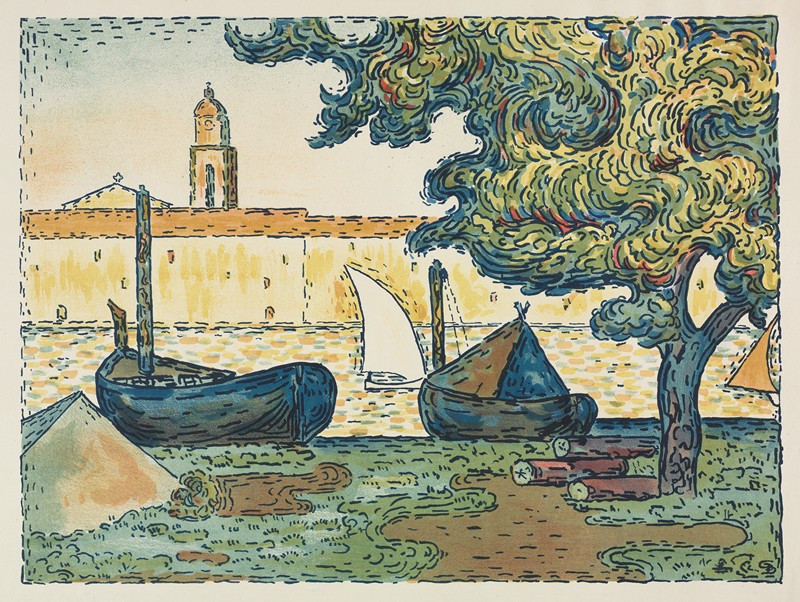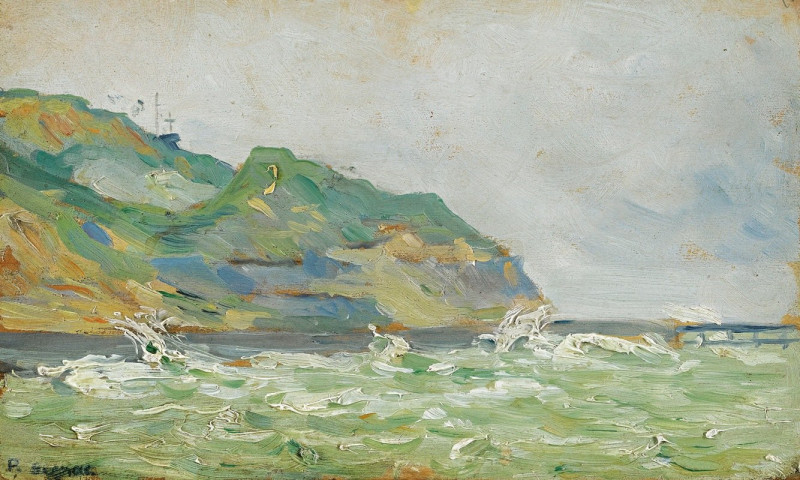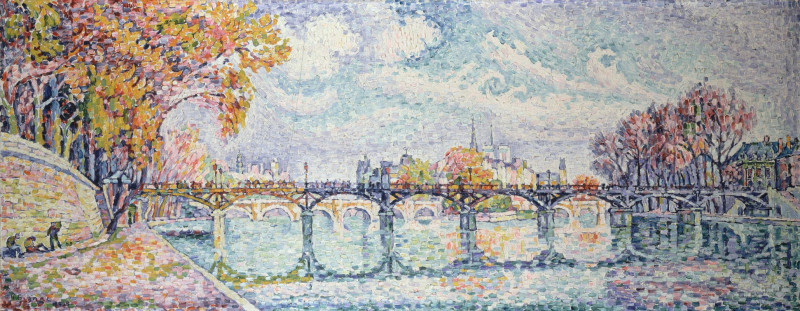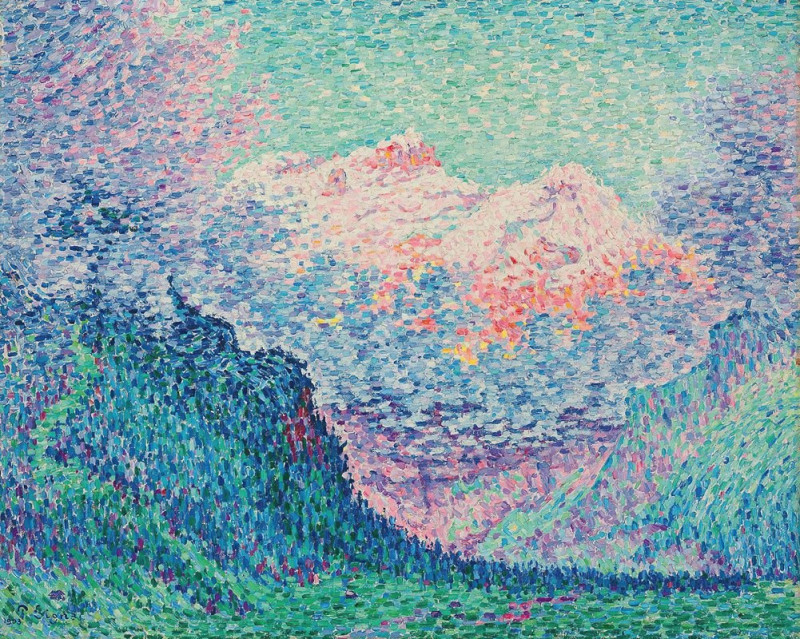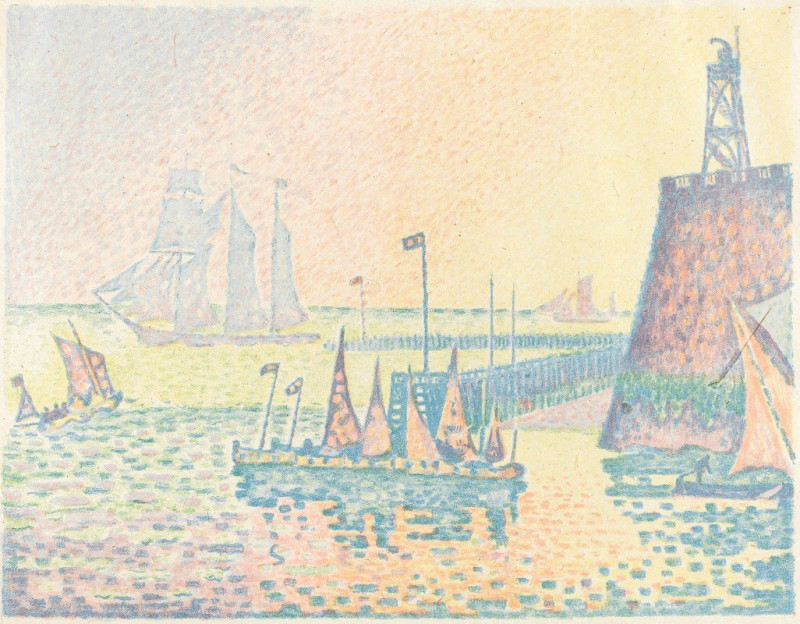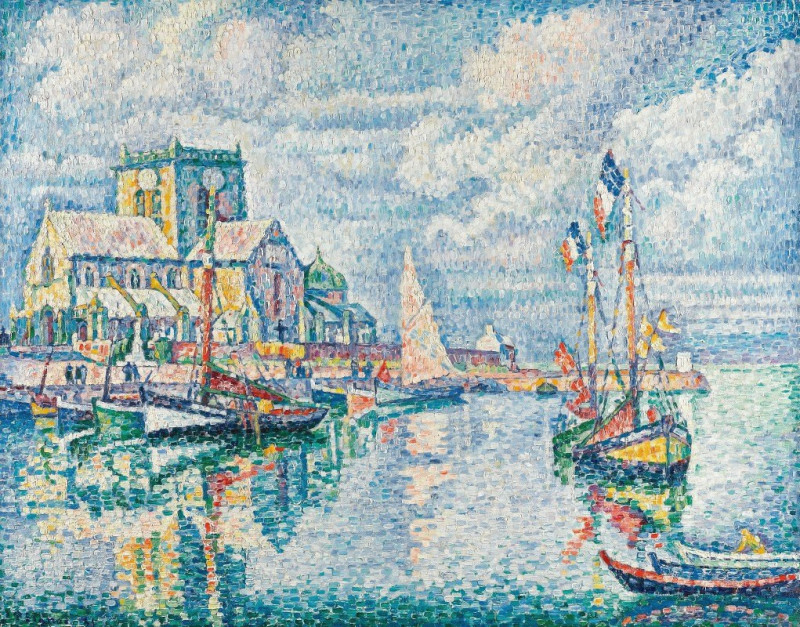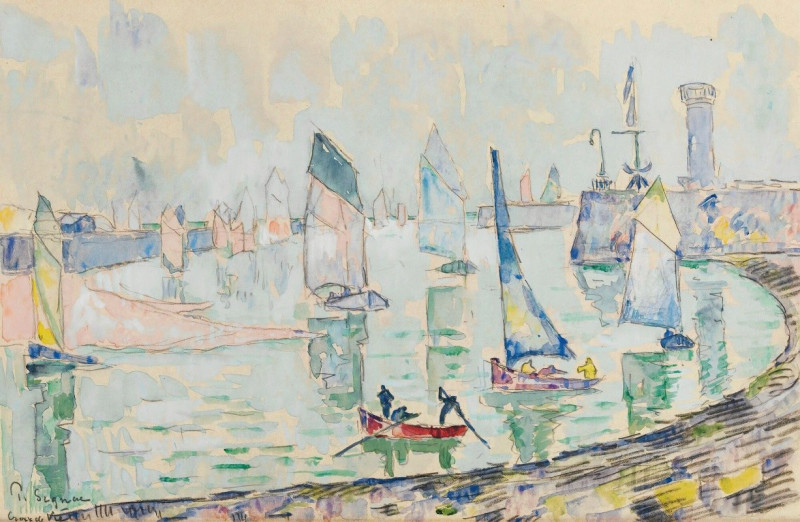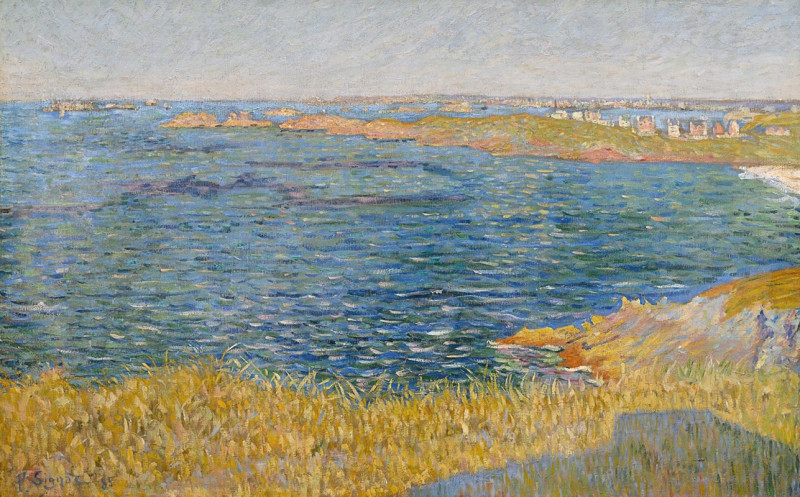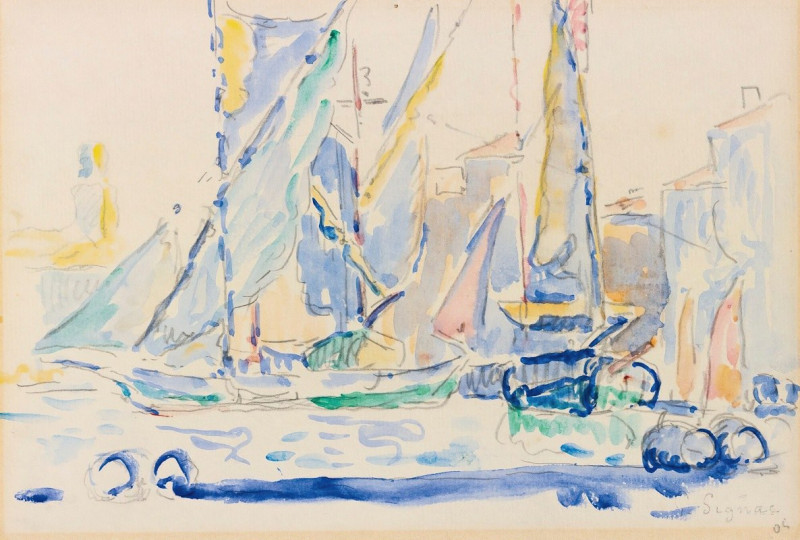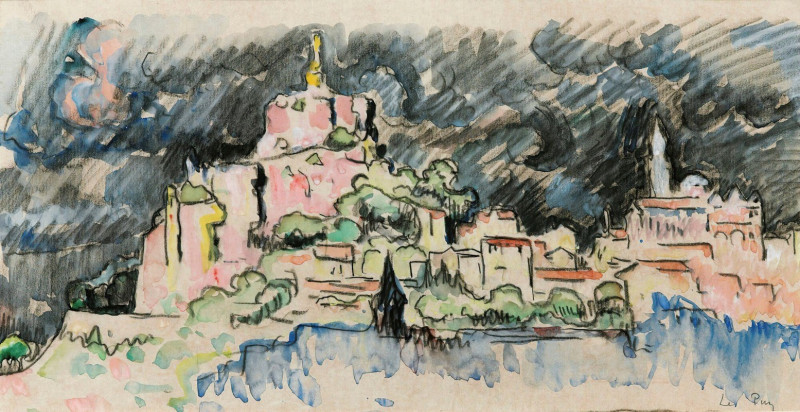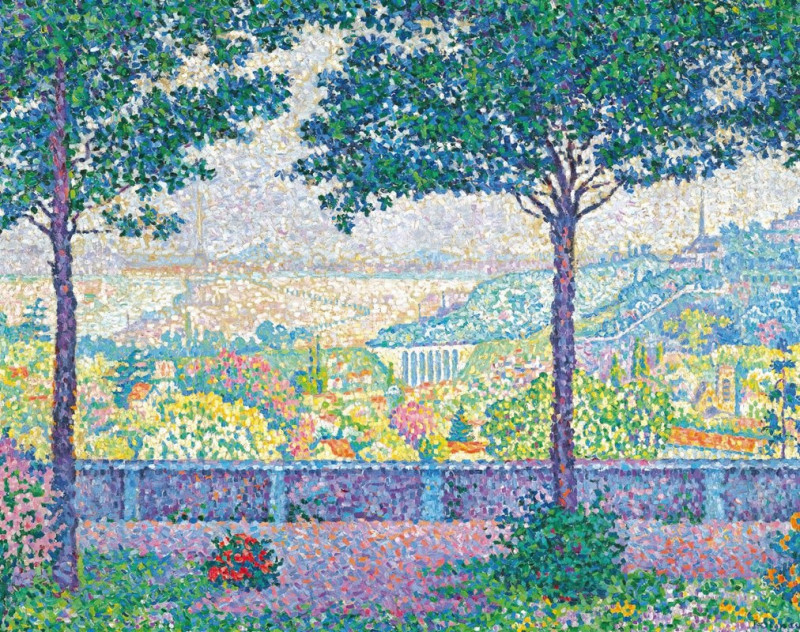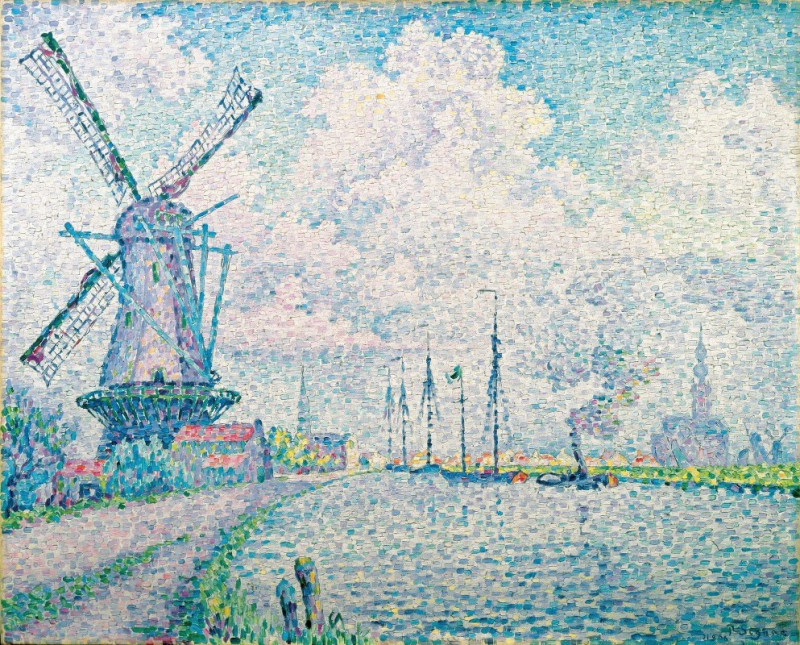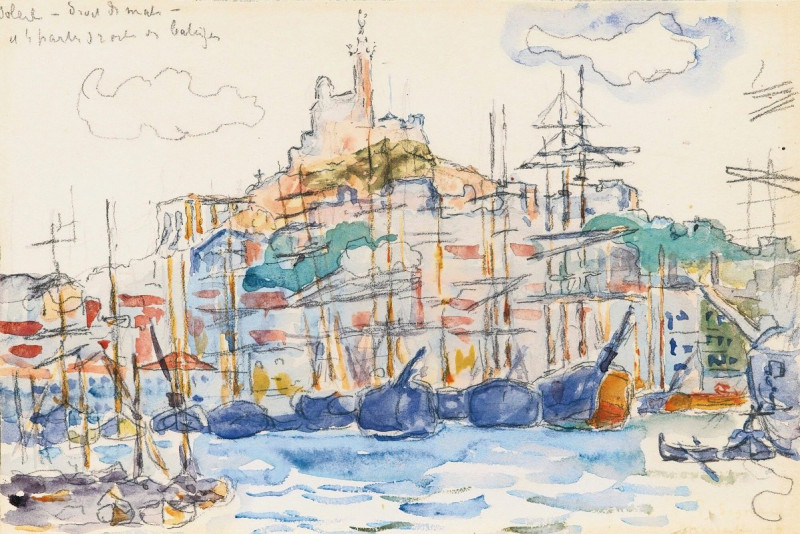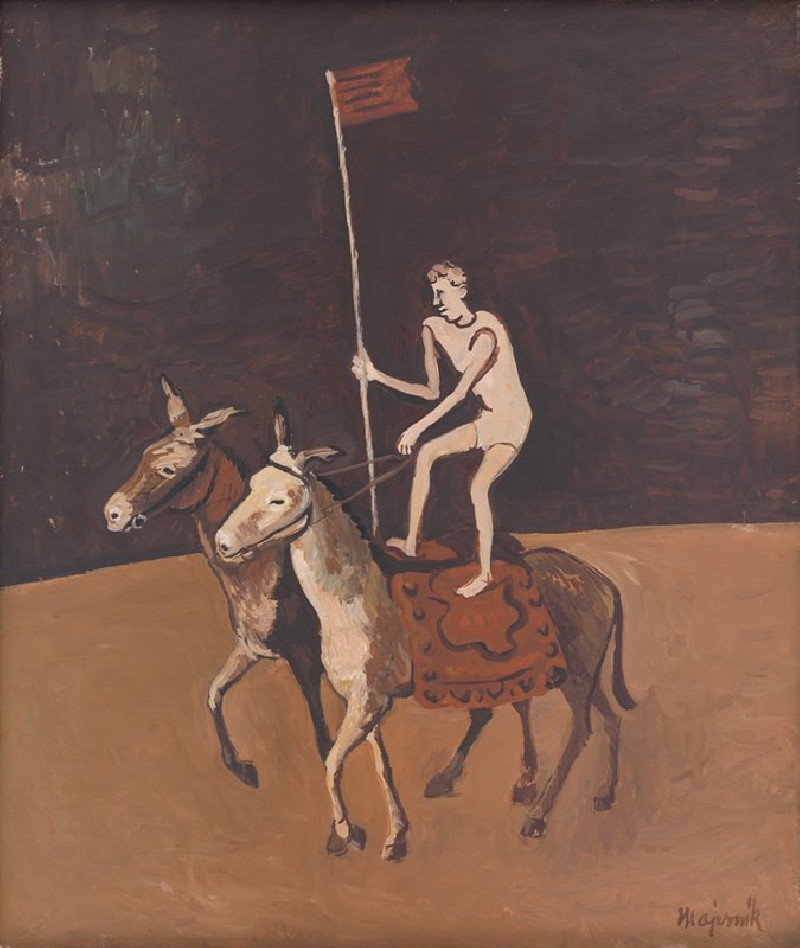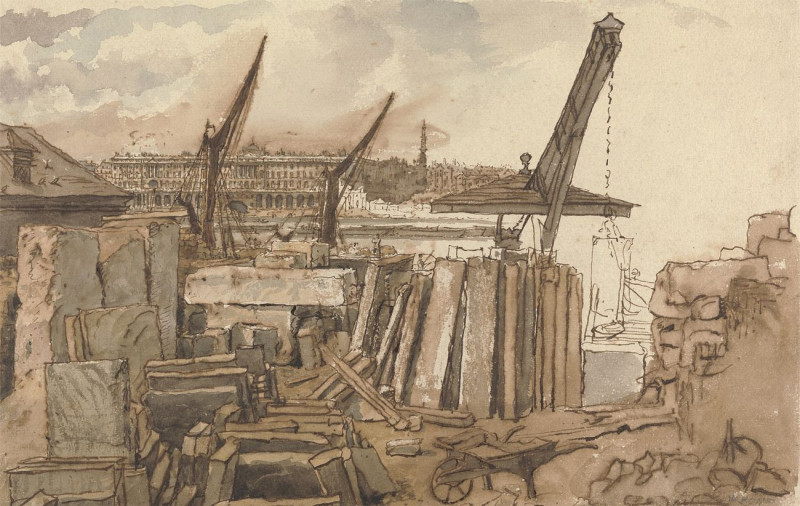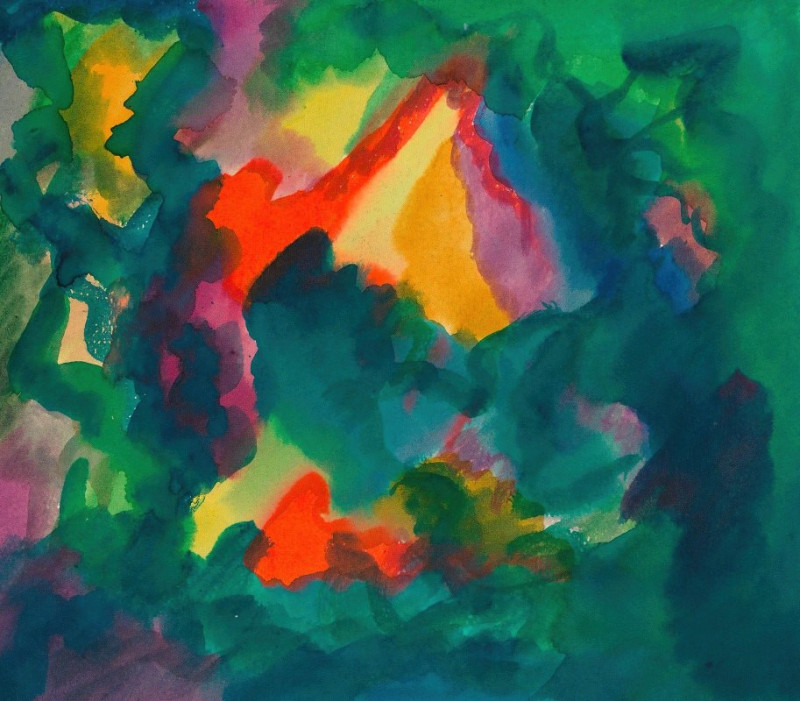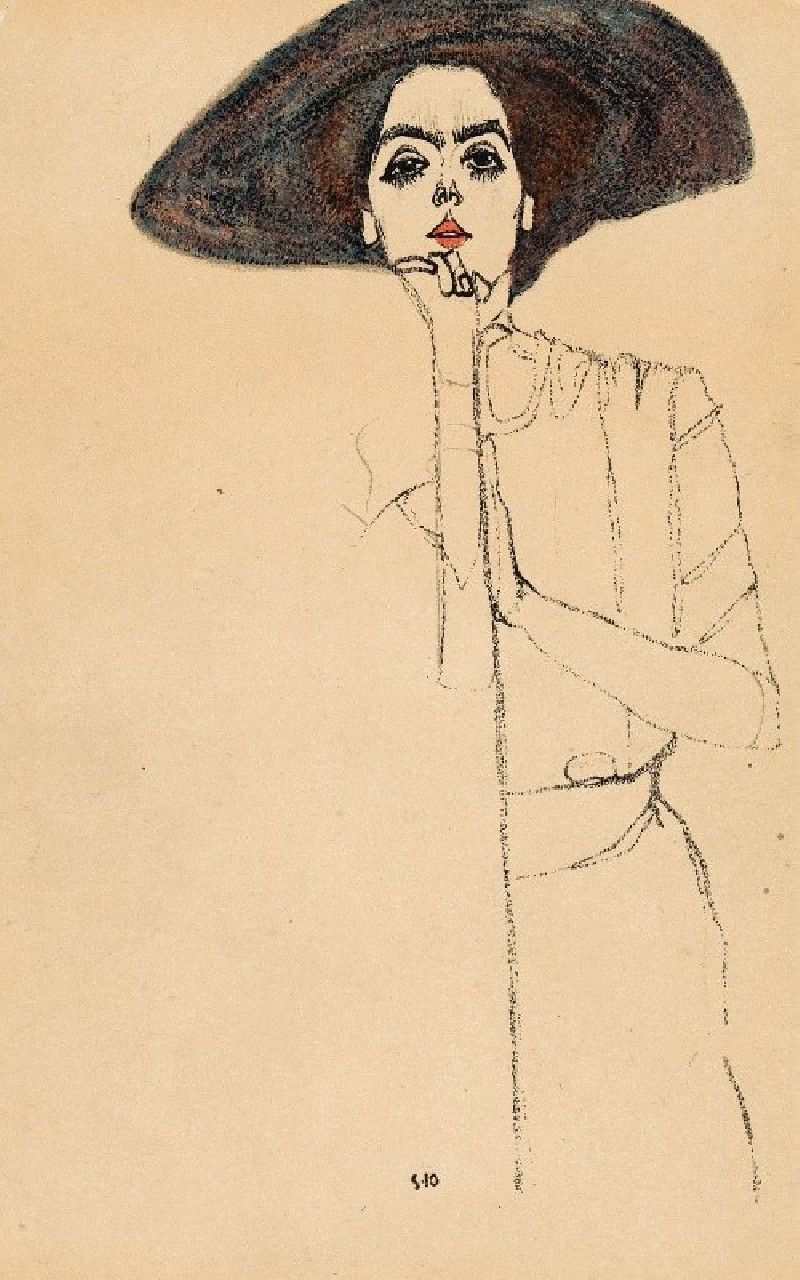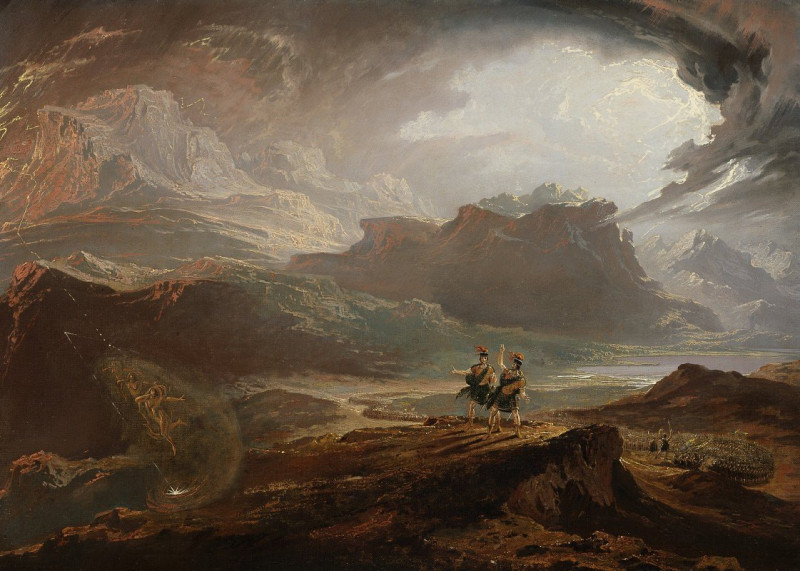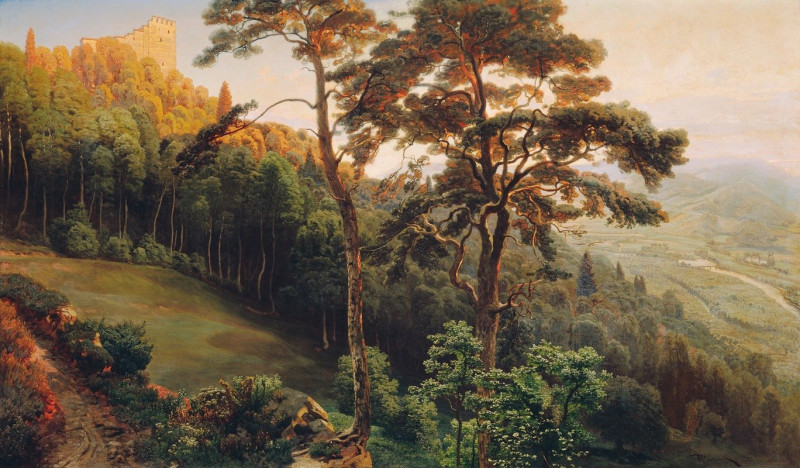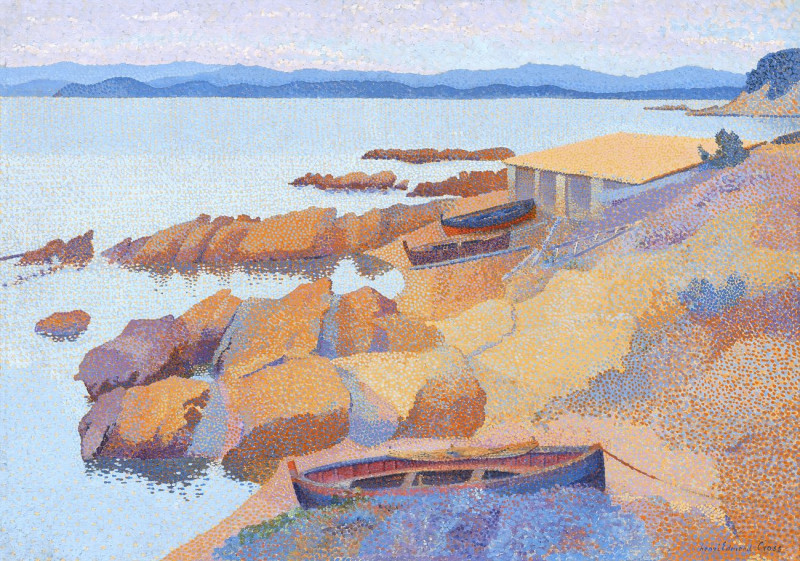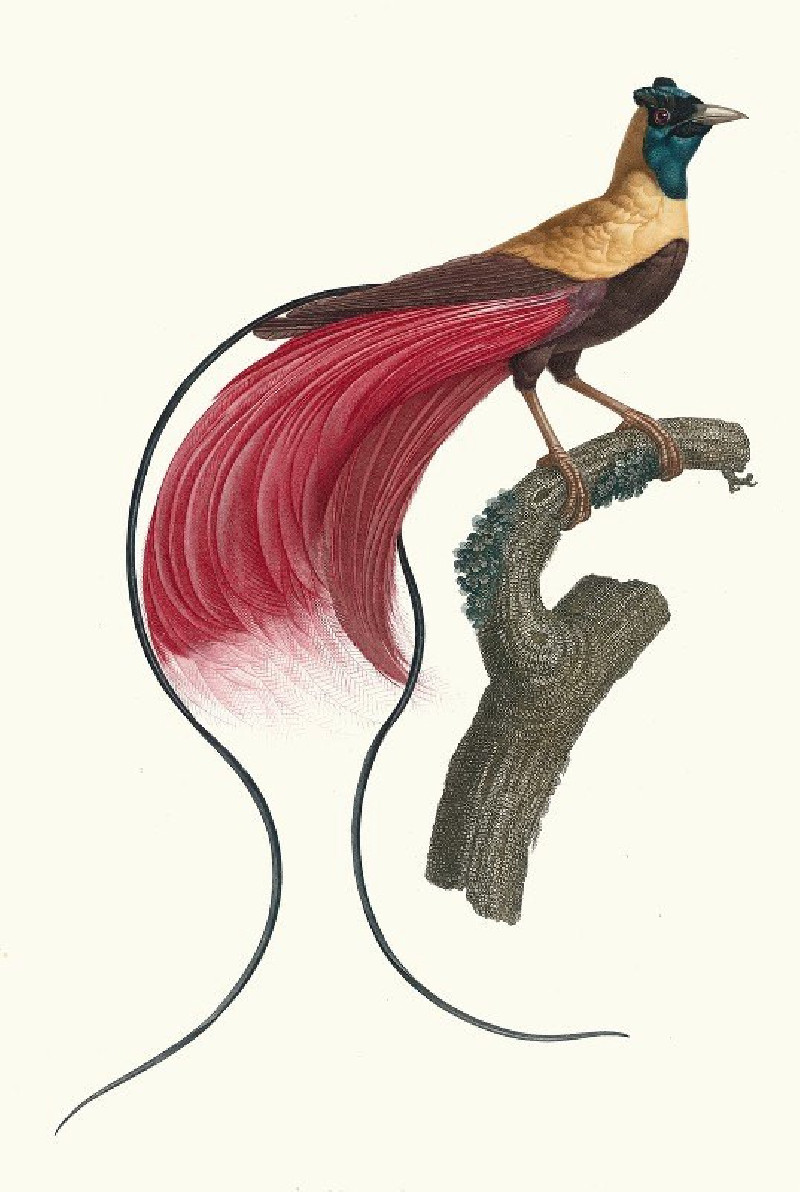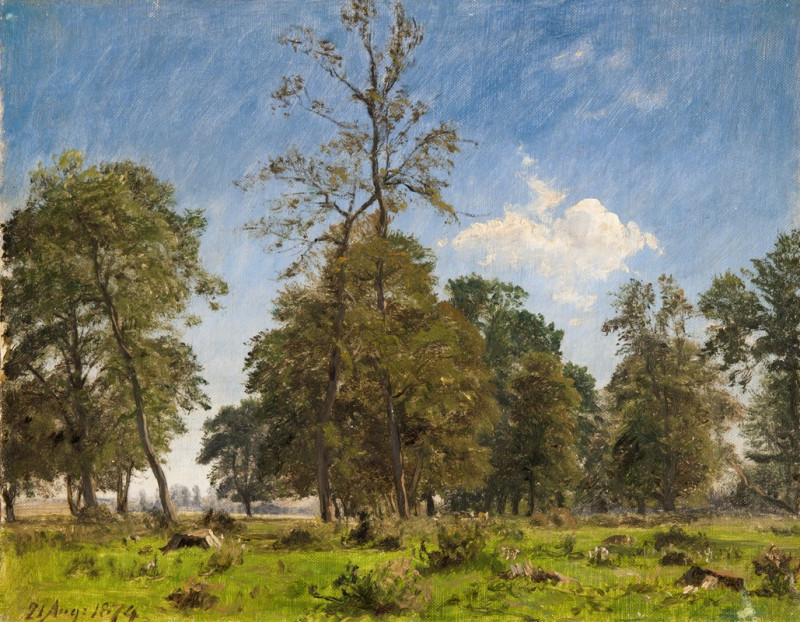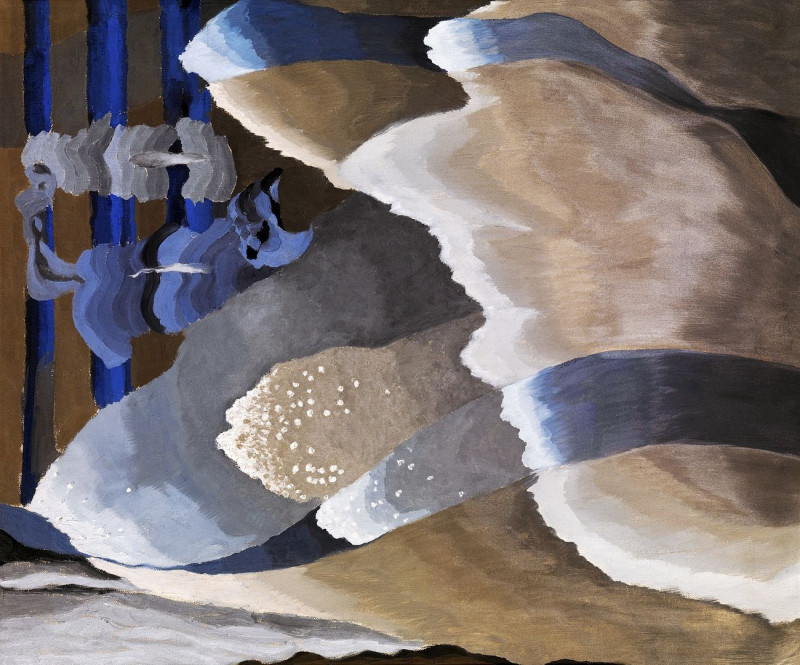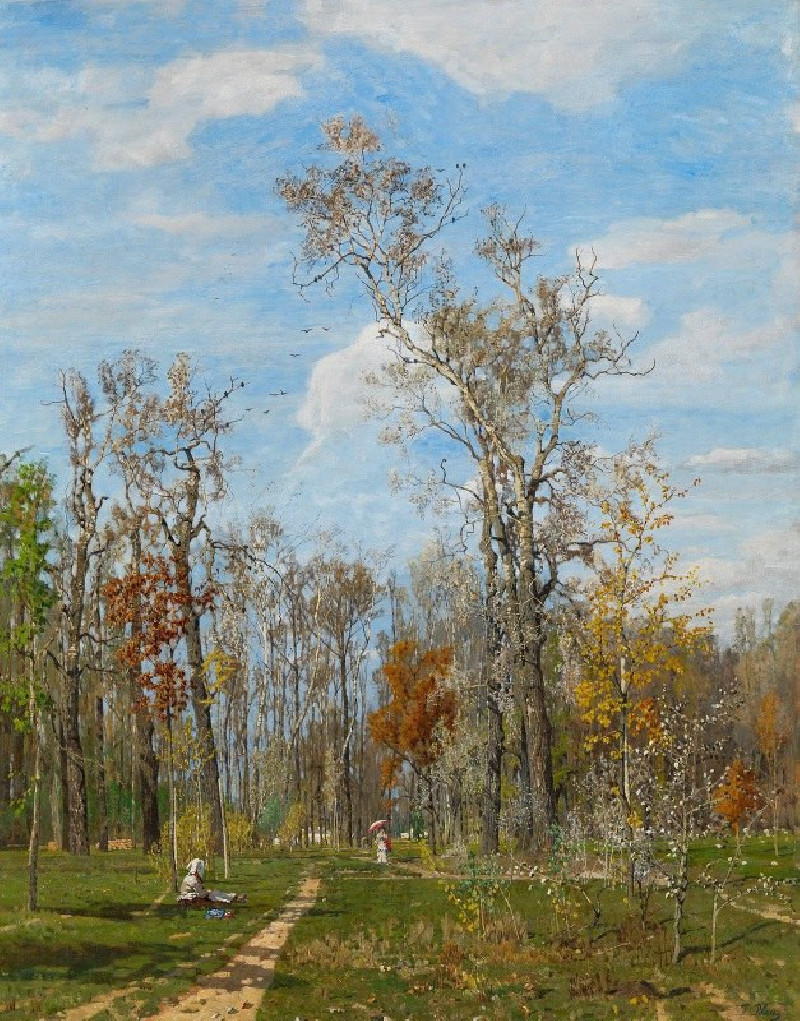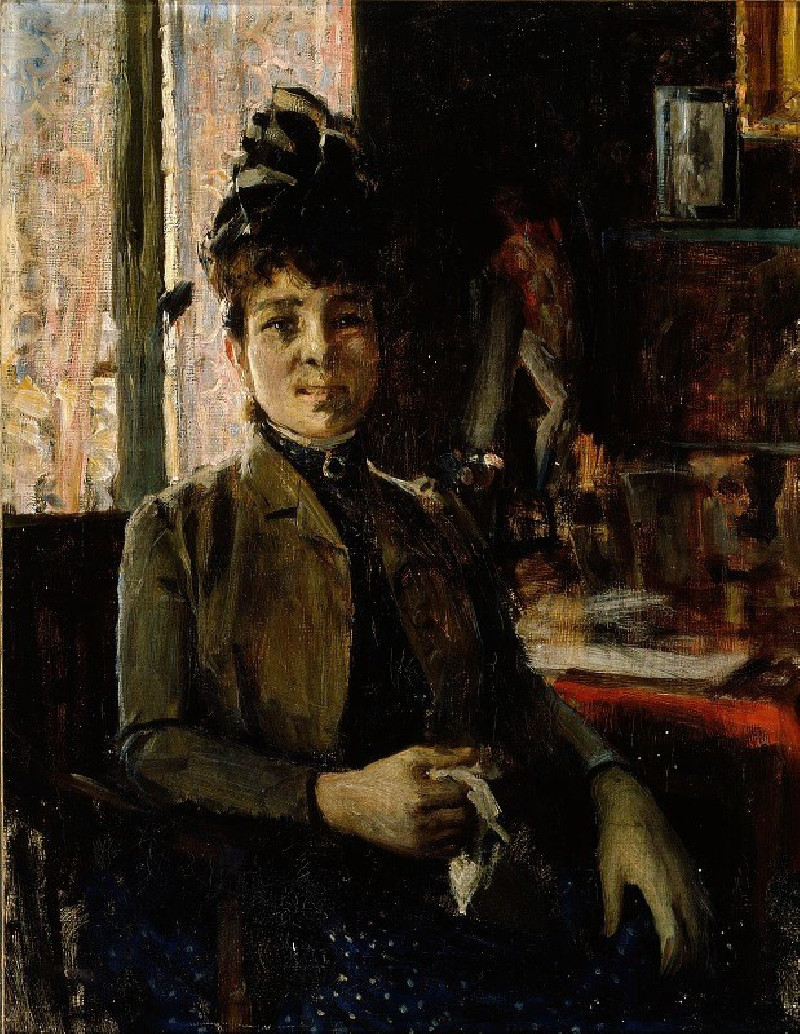The Buoy (La bouée) (1894)
Technique: Giclée quality print
Recommended by our customers
More about this artwork
"The Buoy" (La Bouée), painted in 1894 by Paul Signac, is a luminous portrayal of a picturesque maritime scene. This artwork exemplifies Signac's mastery in the Pointillist technique, where small, distinct dots of color are applied in patterns to form an image. The painting showcases a serene harbor setting, bathed in a golden light that seemingly dances on the water's surface.Central to the composition is a buoy, rendered in rich shades of red, floating tranquilly on the reflective water. The backdrop features tall ships and a row of multi-storied buildings, their façades tinted with the warm hues of sunlight. The vibrant reflections in the water, composed of myriad blues, yellows, and reds, add a dynamic quality to the scene, inviting the viewer to appreciate the interplay of light and color.Through "The Buoy," Signac captures not just a moment but an atmosphere, combining meticulous technique with a vivid palette to evoke a sense of peacefulness and the gentle rhythm of harbor life.
Delivery
Returns
Paul Signac (1863-1935) was a French Neo-Impressionist painter. Together with Georges Seurat, Signac developed the Pointillism style. He was a passionate sailor, bringing back watercolor sketches of ports and nature from his travels, then turning them into large studio canvases with mosaic-like squares of color. He abandoned the short brushstrokes and intuitive dabs of color of the impressionists for a more exact scientific approach to applying dots with the intention to combine and blend not on the canvas, but in the viewer's eye.

